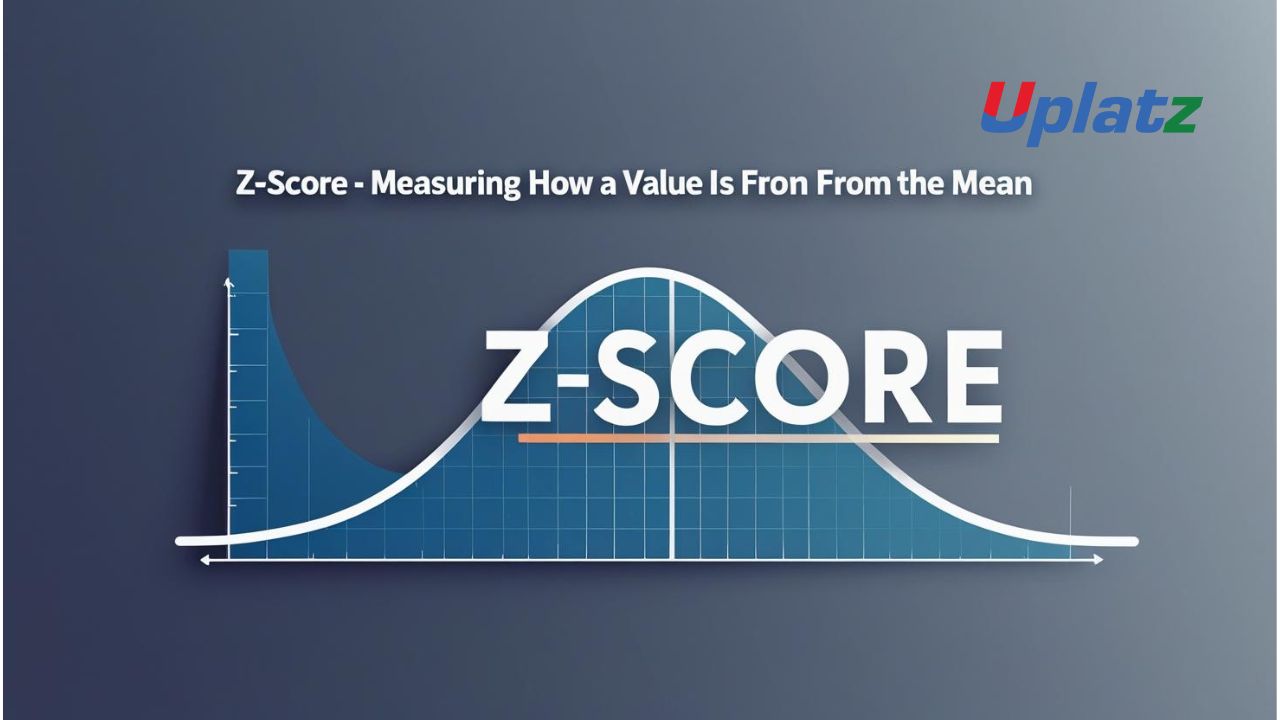 🔹 Short Description:
🔹 Short Description:
The Z-score tells us how many standard deviations a data point is from the mean. It helps in standardizing data, identifying outliers, and comparing values across different datasets.
🔹 Description (Plain Text):
The Z-score, also known as the standard score, is a statistical measure that tells you how far a specific data point lies from the mean of a dataset — in terms of standard deviations. It is used extensively in standardizing data, comparing across distributions, and detecting anomalies.
Formula:
Z = (x − μ) / σ
Where:
- x = the data point
- μ = mean of the dataset
- σ = standard deviation of the dataset
Example:
Suppose a student scores 85 in a test, the average score is 70, and the standard deviation is 10.
- Z = (85 − 70) / 10 = 1.5
This means the student’s score is 1.5 standard deviations above the average.
Why the Z-Score Is Useful:
The Z-score allows you to standardize values across different scales. This is helpful when comparing scores, measurements, or values from different distributions — like comparing test results across different subjects or years.
A Z-score of 0 means the value is exactly at the mean.
A positive Z-score indicates the value is above the mean.
A negative Z-score means it’s below the mean.
Real-World Applications:
- Education: Standardizing test scores across different schools or states
- Finance: Identifying outlier stock performances or detecting trading anomalies
- Healthcare: Standardizing lab test results across hospitals or populations
- Machine Learning: Feature normalization for algorithms sensitive to scale
- Quality Control: Spotting unusual measurements in production systems
Key Insights:
- Z-scores enable fair comparisons across different units or scales
- They’re the basis of standard normal distributions
- Useful in outlier detection: values with |Z| > 2 or 3 are often flagged
- Helps in percentile calculation using standard normal distribution tables
Limitations:
- Z-scores assume a normal distribution; they may not be meaningful if the data is skewed
- In small datasets, outliers can distort the mean and standard deviation, affecting Z-scores
- Interpretation should always consider context — a high Z-score in finance may mean risk, but in education it could mean excellence
Z-scores make statistics more meaningful by translating raw numbers into relative positions within a dataset. Understanding them is essential for data analysis, hypothesis testing, and machine learning.
🔹 Meta Title:
Z-Score – Formula, Interpretation, and Use Cases Across Fields
🔹 Meta Description:
Understand Z-scores and their role in statistics. Learn how to compute and interpret Z-scores to measure data position relative to the mean. Discover real-world applications in finance, education, healthcare, and machine learning, and explore how Z-scores support normalization and outlier detection.
